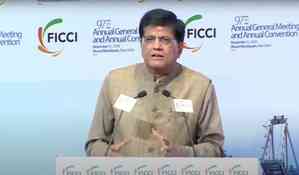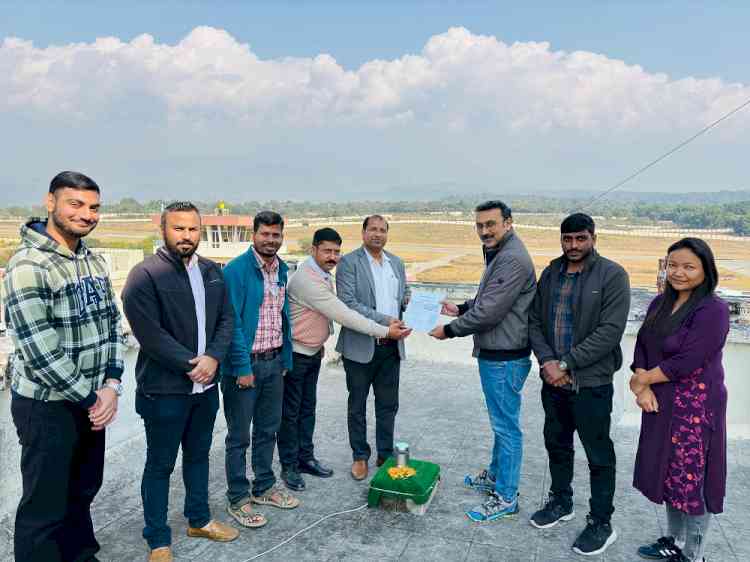Cultivating Hope: Soil restoration, a critical frontier in Climate Change Mitigation

by Melind Deshpande
As the global community grapples with the escalating challenges posed by climate change, a growing consensus is emerging that innovative and sustainable solutions must be sought across multiple fronts. Among the myriad strategies for mitigating climate change, soil restoration emerges as a critical frontier, offering not only carbon sequestration but also a host of other ecological and agricultural benefits. In this article, we delve into the importance of soil restoration in the fight against climate change and explore the potential it holds for cultivating hope in a world facing unprecedented environmental challenges.
The Role of Soil in Climate Change Mitigation
Soil, often overlooked in the broader discourse on climate change, plays a crucial role in both carbon sequestration and the overall health of ecosystems. Healthy soil acts as a reservoir for carbon, storing substantial amounts of it in the form of organic matter. However, unsustainable land management practices, deforestation and industrial agriculture have led to soil degradation, compromising its ability to sequester carbon effectively.
Soil degradation not only contributes to the release of carbon dioxide into the atmosphere but also diminishes the soil's capacity to support plant life and retain water. This, in turn, exacerbates the effects of extreme weather events, such as droughts and floods, which are becoming increasingly common due to climate change.
Soil Restoration as a Carbon Sink
Implementing soil restoration techniques can turn the tide by enhancing the soil's capacity to sequester carbon. Practices such as cover cropping, agroforestry, and regenerative agriculture promote the accumulation of organic matter in the soil, acting as a carbon sink. By restoring degraded soils, we not only sequester carbon but also mitigate the release of greenhouse gases into the atmosphere.
The Carbon-Negative Potential of Soil
Beyond mere carbon sequestration, certain soil restoration practices have the potential to achieve carbon negativity. Biochar, for example, involves converting organic waste into a stable form of carbon that can persist in the soil for centuries. This approach not only sequesters carbon but also enhances soil fertility and water retention, contributing to more resilient and productive ecosystems.
Biodiversity and Soil Health
Soil restoration goes beyond carbon sequestration, addressing the broader issue of biodiversity loss. Healthy soils support diverse microbial communities, which play a pivotal role in nutrient cycling, pest control, and overall ecosystem resilience. By restoring soil health, we promote biodiversity, creating ecosystems that are more resilient to climate change impacts.
Water Management and Soil Restoration
Soil restoration also plays a key role in sustainable water management. Healthy soils have better water retention capacity, reducing the risk of both drought and flood events. By restoring degraded soils, we contribute to the overall resilience of landscapes, protecting communities from the adverse effects of extreme weather events exacerbated by climate change.
Empowering Local Communities
Soil restoration is not only a global imperative but also an opportunity to empower local communities. Adopting sustainable agricultural practices and regenerative land management techniques can enhance food security, improve livelihoods, and promote community resilience in the face of climate change.
Case Studies in Soil Restoration
Numerous successful initiatives around the world demonstrate the potential of soil restoration in mitigating climate change. In China, the "Grain for Green" program has led to the reforestation of millions of hectares of degraded land, resulting in increased carbon sequestration and improved ecosystem services. In Africa, the push for sustainable land management practices, such as agroforestry and conservation agriculture, aims to restore soil health and enhance resilience to climate change.
The Importance of Policy Support
While grassroots initiatives are crucial, the widespread adoption of soil restoration practices requires supportive policies at local, national, and international levels. Governments, agricultural organizations, and global institutions must incentivize and promote regenerative practices through financial mechanisms, subsidies, and educational programs.
Conclusion
Cultivating hope in the face of climate change requires embracing innovative solutions that address the root causes of environmental degradation. Soil restoration stands out as a critical frontier in climate change mitigation, offering a multifaceted approach that goes beyond carbon sequestration. Agroecology, an approach that emphasises sustainable and biodiverse farming systems, is gaining traction as a means to restore and maintain soil health.
Practices such as crop rotation, intercropping and the use of organic fertilizers not only improve soil fertility but also contribute to the resilience of agricultural systems in the face of climate change. By prioritising the health of our soils, we not only contribute to the global effort to combat climate change but also build more resilient and sustainable ecosystems for generations to come. It is time to recognize the transformative potential of soil restoration and harness its power in cultivating a more hopeful and sustainable future.
The author is the Founder and CEO of BhoomiSeva, HCF Tech Services Private Limited and distributor for Bhu-Vision (Krishi-RASTAA) which is an IOT based automated soil testing manufactured by HiMedia Labs and a agronomy advisory platform developed by KrishiTantra.


 City Air News
City Air News 












